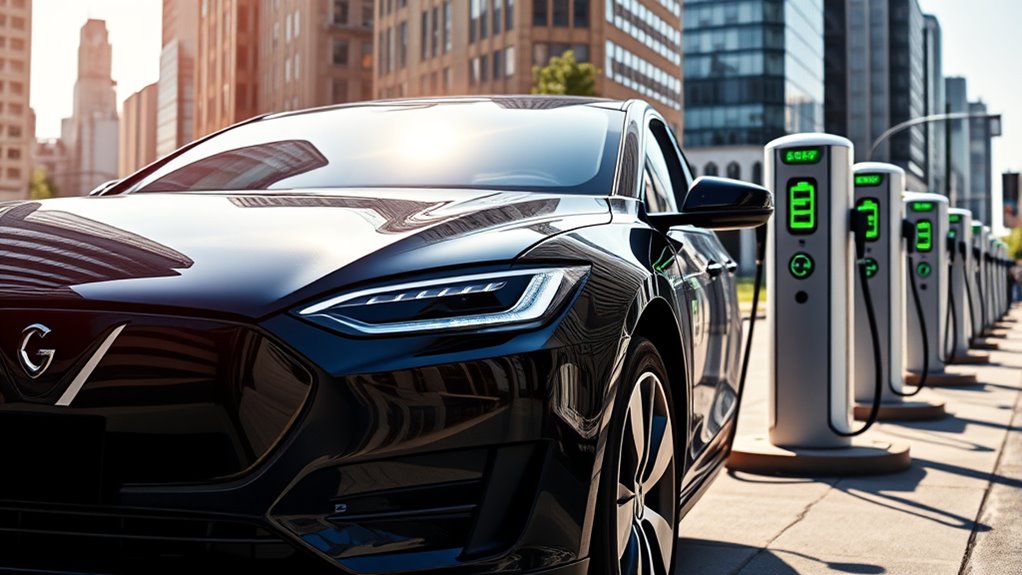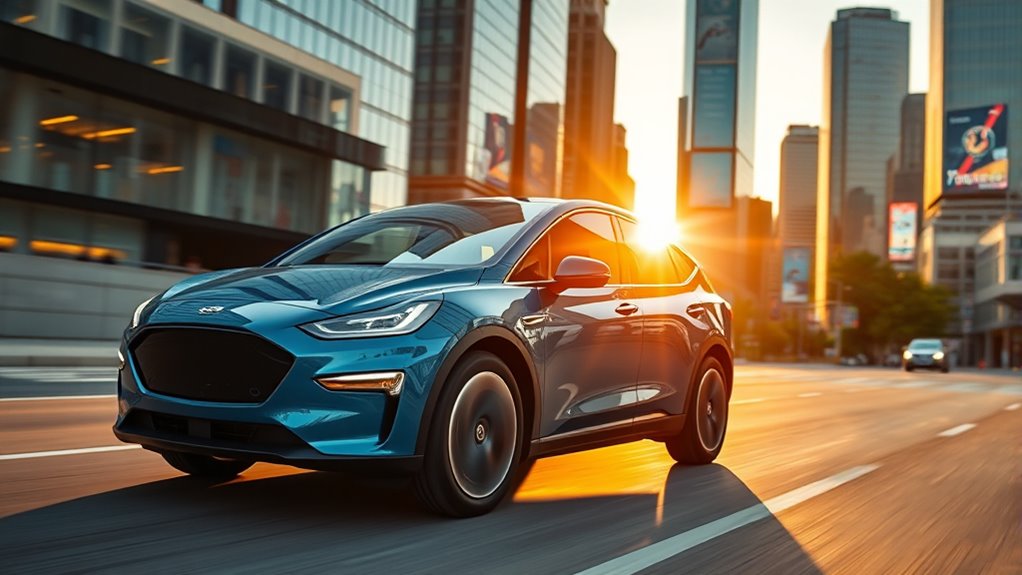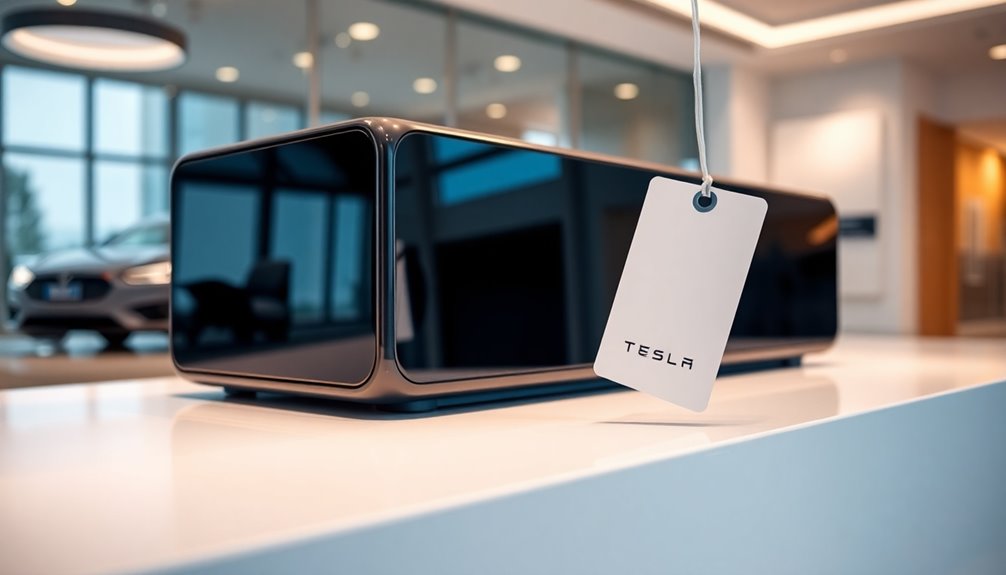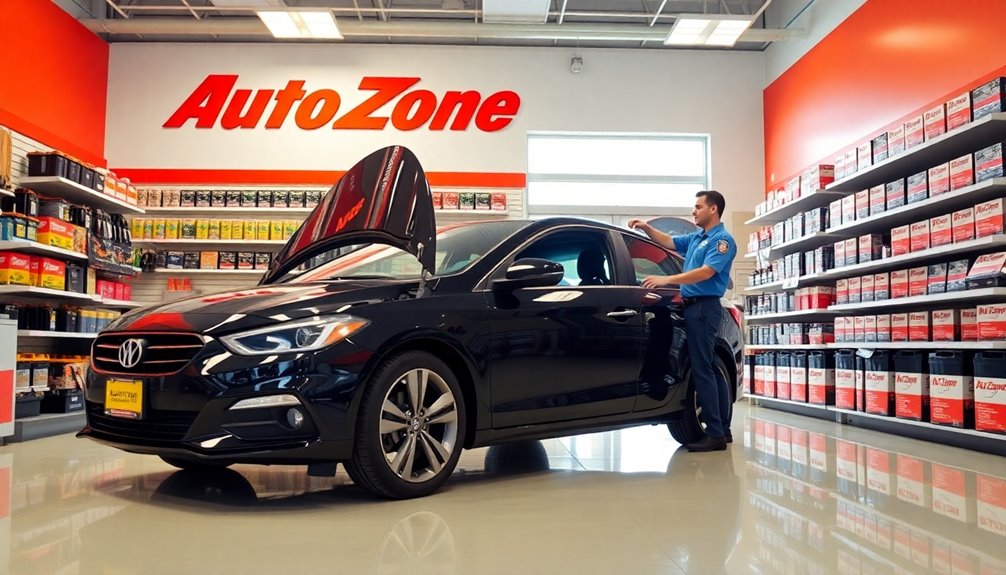Advancements in battery technology are key drivers behind the ongoing EV price war. Automakers invest heavily in research to make batteries safer, more efficient, and cheaper to produce. As battery costs decrease, manufacturers can lower overall vehicle prices, making EVs more affordable for you. Faster charging, longer lifespan, and lower production costs all contribute to reducing sticker prices. Keep exploring to understand how these innovations are reshaping the future of electric vehicles.
Key Takeaways
- Advances in battery technology, especially solid-state batteries, reduce manufacturing costs of EVs.
- Lower battery costs decrease the overall price per vehicle, leading to more affordable EVs.
- Continuous innovation accelerates the adoption of cheaper, energy-dense batteries in mass-market vehicles.
- Competition among automakers to leverage the latest battery tech drives prices down further.
- Reduced battery costs directly contribute to the ongoing EV price war, making electric vehicles more accessible.

Battery innovation plays a pivotal role in this dynamic. Companies are investing heavily in research to develop batteries that pack more energy into less space, last longer, and cost less to produce. Solid-state batteries, for example, promise higher safety standards and faster charging times, all while being cheaper to manufacture at scale. As these advanced batteries become mainstream, the cost per kilowatt-hour continues to drop, which directly translates into lower vehicle prices. This technological progress fuels the market competition, with automakers racing to incorporate the latest battery advancements faster than their rivals. The result is a continuous cycle of innovation that benefits you by reducing the overall cost of EVs. Color accuracy and other technological improvements also contribute to making EVs more appealing and affordable, as they allow for better integration of advanced features without significantly raising costs.
Frequently Asked Questions
How Do Government Incentives Affect EV Pricing Strategies?
Government incentives like tax credits considerably influence your EV pricing strategies. You see, subsidy effects encourage manufacturers to lower sticker prices to attract buyers, knowing consumers benefit from tax credits. These incentives can make EVs more affordable, boosting sales and market share. By factoring in tax credits, you can set competitive prices that maximize subsidy benefits, ensuring your vehicles stay attractive while maintaining profitability in a growing market.
What Impact Do Raw Material Shortages Have on Battery Costs?
Have you considered how material scarcity impacts battery costs? Raw material shortages disrupt the supply chain, making it harder and more expensive to source essential components. This scarcity drives up the price of key materials like lithium and cobalt, which in turn increases overall battery costs. When supply chain issues persist, automakers face higher expenses, potentially slowing EV adoption and keeping sticker prices higher for consumers.
How Do Regional Differences Influence EV Price Wars?
You’ll notice that regional disparities play a big role in EV price wars. Different regions have varying access to raw materials, government incentives, and charging infrastructure, which impacts vehicle pricing. Market segmentation also influences competition; manufacturers target specific segments based on regional preferences and economic factors. These differences mean prices fluctuate across areas, creating a dynamic environment where companies compete fiercely to attract buyers in each unique market.
Are There Long-Term Risks for Automakers From Aggressive Price Cuts?
Think of the EV market as a delicate garden—aggressive price cuts might seem like watering it, but over time, it risks overgrowth and stagnation. You could face market saturation, making it tough to sustain profits. Plus, you might weaken brand loyalty if consumers see your prices as temporary. Long-term, this strategy could harm your reputation, reducing your ability to differentiate your brand and innovate effectively.
How Does Battery Recycling Influence Future EV Pricing?
You should consider that battery recycling and reuse considerably influence future EV pricing. By improving recycling economics, you can lower battery costs, making EVs more affordable. Battery reuse extends the life of components, reducing demand for new materials and cutting costs further. This sustainable approach helps stabilize prices, ensuring you benefit from lower sticker prices long-term while supporting environmentally friendly practices.
Conclusion
As battery costs plummet, EV prices drop, making electric cars more accessible than ever. Meanwhile, traditional automakers scramble to keep up, fighting for market share in a fierce price war. This clash of innovation and competition reshapes the automotive landscape, where affordability meets sustainability. In this shifting terrain, the race isn’t just about who sells more cars, but who drives the future forward—proving that sometimes, the biggest gains come from the smallest costs.










